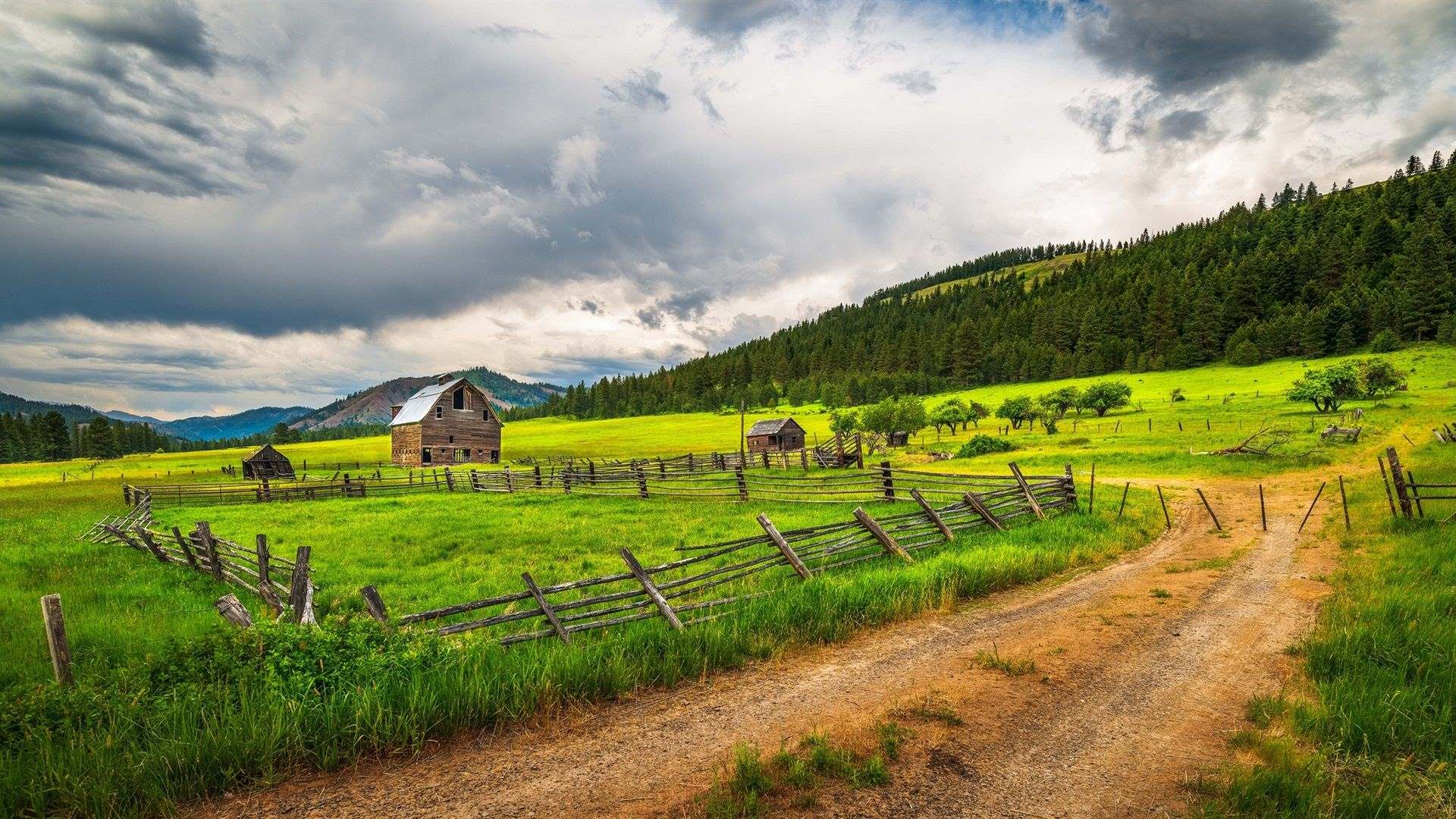
Land is a fundamental component of our planet, providing a home for countless species and playing a crucial role in various natural processes. From towering mountains to vast plains, land encompasses a diverse range of landscapes that captivate our senses and spark a sense of wonder. Yet, there is so much more to land than meets the eye.
In this article, we will explore 20 fascinating facts about land, delving into its incredible formations, its vital importance to ecosystems, and the impact of human activities on its delicate balance. Whether you have a passion for geology, ecology, or simply a curiosity about the world around us, these facts will shed light on the awe-inspiring wonders of our Earth’s land.
Key Takeaways:
- Land is crucial for Earth’s health, providing homes for plants and animals, resources for humans, and opportunities for outdoor fun. We need to protect and manage it sustainably for the future.
- From Mount Everest to the Dead Sea, land is full of diverse wonders. But human activities threaten its health. We must take care of the land to preserve its beauty and resources.
The Earth’s land surface covers about 29% of its total area.
Land is one of the most vital components of our planet, comprising approximately 29% of the Earth’s surface. It plays a crucial role in supporting various ecosystems, providing habitats for millions of species, and serving as a foundation for human civilization.
Land is a diverse and dynamic environment.
From vast plains to towering mountains, from lush forests to arid deserts, land encompasses a wide range of landscapes. It is constantly evolving through natural processes such as weathering, erosion, and tectonic activity.
The highest point on land is Mount Everest.
Rising majestically to an elevation of 8,848 meters (29,029 feet), Mount Everest is the tallest mountain on Earth. Located in the Himalayas between Nepal and Tibet, it attracts adventurers from around the world, aiming to conquer its formidable peak.
The lowest point on land is the Dead Sea.
Situated at 430.5 meters (1,410 feet) below sea level, the Dead Sea holds the record as the Earth’s lowest point on land. Its high salt content makes it inhospitable for most forms of life, but the mineral-rich waters have long been valued for their therapeutic properties.
Land plays a crucial role in the water cycle.
As precipitation falls onto the land, it infiltrates the soil or runs off into rivers and streams, eventually making its way back to the oceans. Land acts as a natural filtration system, purifying water and replenishing important water sources such as groundwater aquifers.
The formation of land can take millions of years.
Landforms such as mountains, valleys, and plateaus are the result of slow geological processes that can span millions of years. Forces like tectonic activity, erosion, and deposition shape the land over extended periods, creating the diverse landscapes we see today.
Land provides vital resources for human survival.
Land is a source of essential resources such as food, water, minerals, and energy. Through agriculture, land sustains our growing population by providing a platform for crop cultivation and livestock rearing. It also holds valuable reserves of fossil fuels and other natural resources.
Land acts as a carbon sink, helping mitigate climate change.
Plants and forests on land absorb carbon dioxide from the atmosphere through photosynthesis, acting as a vital carbon sink. This helps regulate the Earth’s climate and mitigate the effects of climate change, making land conservation and reforestation crucial in our fight against global warming.
Land encompasses diverse ecosystems and habitats.
From tropical rainforests teeming with biodiversity to vast grasslands supporting unique species, land provides a home for an incredible array of plants and animals. These ecosystems play a vital role in maintaining ecological balance and providing essential natural services.
Land is constantly under threat from human activities.
Human activities such as deforestation, urbanization, and pollution pose significant threats to land and its ecosystems. These activities can lead to habitat destruction, soil degradation, and loss of biodiversity, highlighting the urgent need for sustainable land management practices.
Land can be classified into different types.
Land can be categorized into various types based on factors such as topography, climate, and vegetation. Some common land types include forests, grasslands, wetlands, deserts, and agricultural land, each with its distinct characteristics and ecological functions.
Land plays a crucial role in cultural and historical heritage.
Land holds immense cultural and historical significance, with many iconic landmarks, ancient ruins, and sacred sites scattered across its vast expanse. These places provide insights into our shared human history and hold a deep cultural value for communities around the world.
Land provides opportunities for outdoor recreation and adventure.
From hiking and camping to skiing and rock climbing, land offers endless opportunities for outdoor enthusiasts to engage in recreational activities and connect with nature. National parks, nature reserves, and wilderness areas provide protected spaces for people to explore and enjoy the beauty of the natural world.
Land degradation is a global concern.
Unsustainable land use practices, such as overgrazing, deforestation, and improper land management, contribute to land degradation worldwide. Desertification, soil erosion, and loss of fertile land are significant challenges that need to be addressed to ensure the long-term sustainability of our planet.
Land can be reclaimed and restored.
Efforts to reclaim and restore degraded land are crucial for preserving ecosystems, enhancing biodiversity, and improving land productivity. Techniques such as reforestation, soil conservation, and sustainable agriculture can help rehabilitate damaged land and mitigate the impacts of land degradation.
Land ownership and land rights are complex issues.
Throughout history, land ownership and land rights have been sources of conflicts and social inequality. Balancing the needs of local communities, indigenous peoples, and larger societal interests is essential to ensure fair and equitable access to land resources and protect the rights of marginalized populations.
Land holds cultural and spiritual significance for many indigenous communities.
For indigenous peoples, land is more than just a physical resource; it is deeply intertwined with cultural, spiritual, and ancestral connections. Preserving indigenous land rights and traditional knowledge is crucial for maintaining cultural diversity and promoting sustainable land stewardship.
Land offers a platform for scientific exploration and discovery.
Land-based research plays a pivotal role in advancing our understanding of Earth’s ecosystems, geology, and natural processes. Scientists study landforms, conduct field experiments, and collect data to unravel the intricate workings of our planet, contributing to scientific knowledge and innovation.
Land conservation is vital for preserving biodiversity.
Preserving and protecting land is essential for conserving biodiversity, safeguarding endangered species, and maintaining the health of ecosystems. Protected areas, national parks, and wildlife reserves play a crucial role in safeguarding land and its valuable natural heritage for future generations.
Land is a finite resource that requires sustainable management.
As the human population continues to grow, it exert more pressure on land and its resources. Adopting sustainable land management practices, promoting reforestation, and embracing land-use planning are necessary steps to ensure the long-term viability and health of our planet’s land.
Conclusion
The Earth’s land is a fascinating and diverse environment that is teeming with life and natural wonders. From towering mountains to vast plains, land plays a critical role in shaping our planet’s ecosystems and providing a home for countless species. Exploring and understanding the complexities of land can help us appreciate the incredible beauty and importance of nature.
Hopefully, these 20 facts about land have provided you with a deeper understanding and appreciation for the Earth’s terrain. From the highest peaks to the deepest valleys, land encompasses a wide range of landscapes and features that are worth exploring. So, the next time you venture out into nature, take a moment to marvel at the incredible diversity and resilience of our planet’s land.
FAQs
Q: What is the difference between land and water ecosystems?
A: Land ecosystems are characterized by the presence of terrestrial plants and animals, while water ecosystems are dominated by aquatic organisms. They differ in terms of the types of species and adaptations that can be found within each environment.
Q: How are mountains formed?
A: Mountains are typically formed through tectonic processes, such as the collision of continental plates or volcanic activity. Over time, the forces of nature shape the Earth’s crust, creating majestic mountain ranges.
Q: What is soil erosion?
A: Soil erosion refers to the process by which soil particles are detached and transported away by wind, water, or human activities. It can have detrimental effects on agriculture, ecosystems, and water quality.
Q: How are deserts formed?
A: Deserts are formed in areas with low precipitation, often due to geographical factors such as proximity to mountain ranges or the influence of ocean currents. The arid conditions in deserts contribute to the unique adaptations of plants and animals that inhabit these regions.
Q: How does land contribute to climate change?
A: Land use changes, such as deforestation and urbanization, can contribute to climate change by releasing carbon dioxide and other greenhouse gases into the atmosphere. Additionally, land acts as a carbon sink, absorbing and storing carbon, which can help mitigate climate change.
Was this page helpful?
Our commitment to delivering trustworthy and engaging content is at the heart of what we do. Each fact on our site is contributed by real users like you, bringing a wealth of diverse insights and information. To ensure the highest standards of accuracy and reliability, our dedicated editors meticulously review each submission. This process guarantees that the facts we share are not only fascinating but also credible. Trust in our commitment to quality and authenticity as you explore and learn with us.


